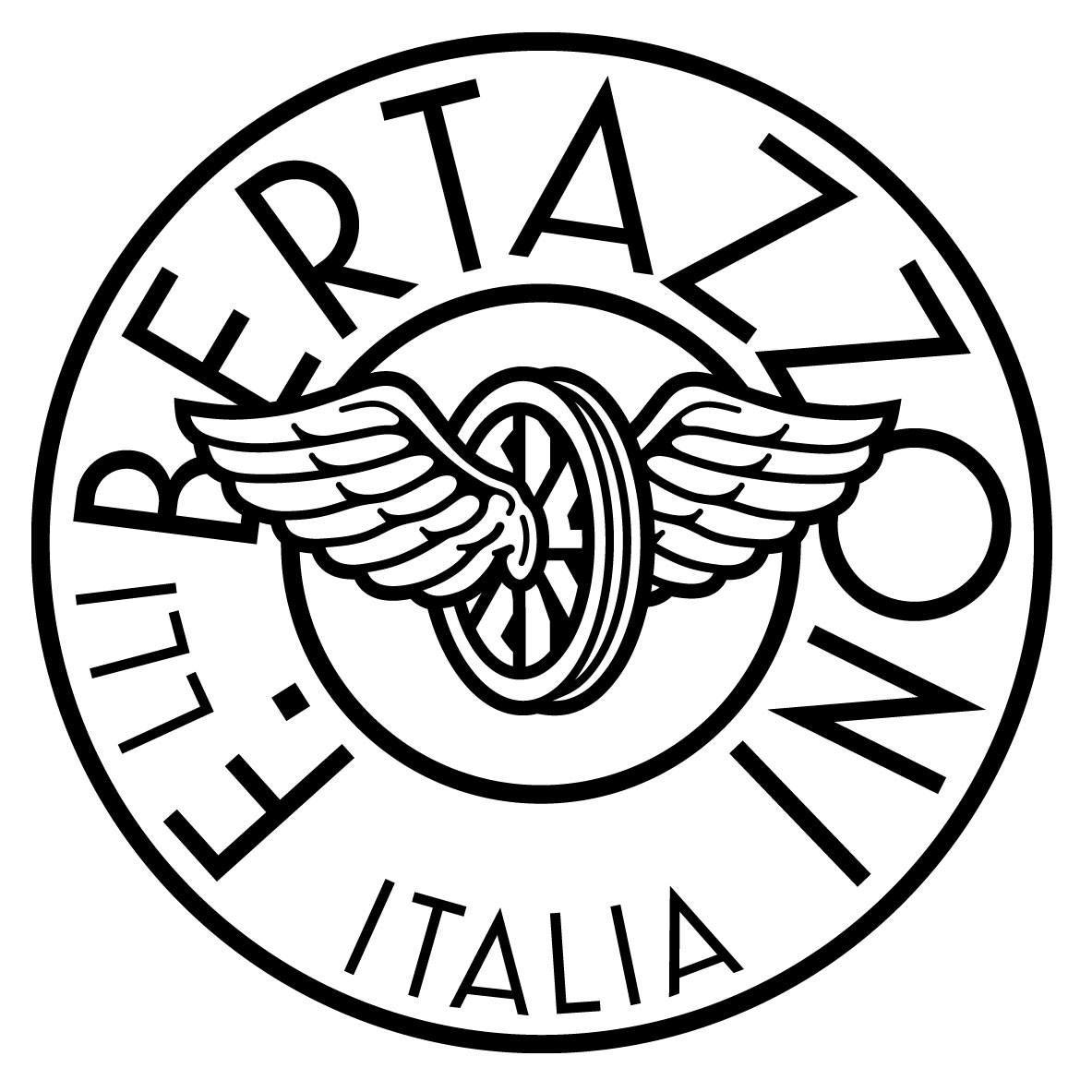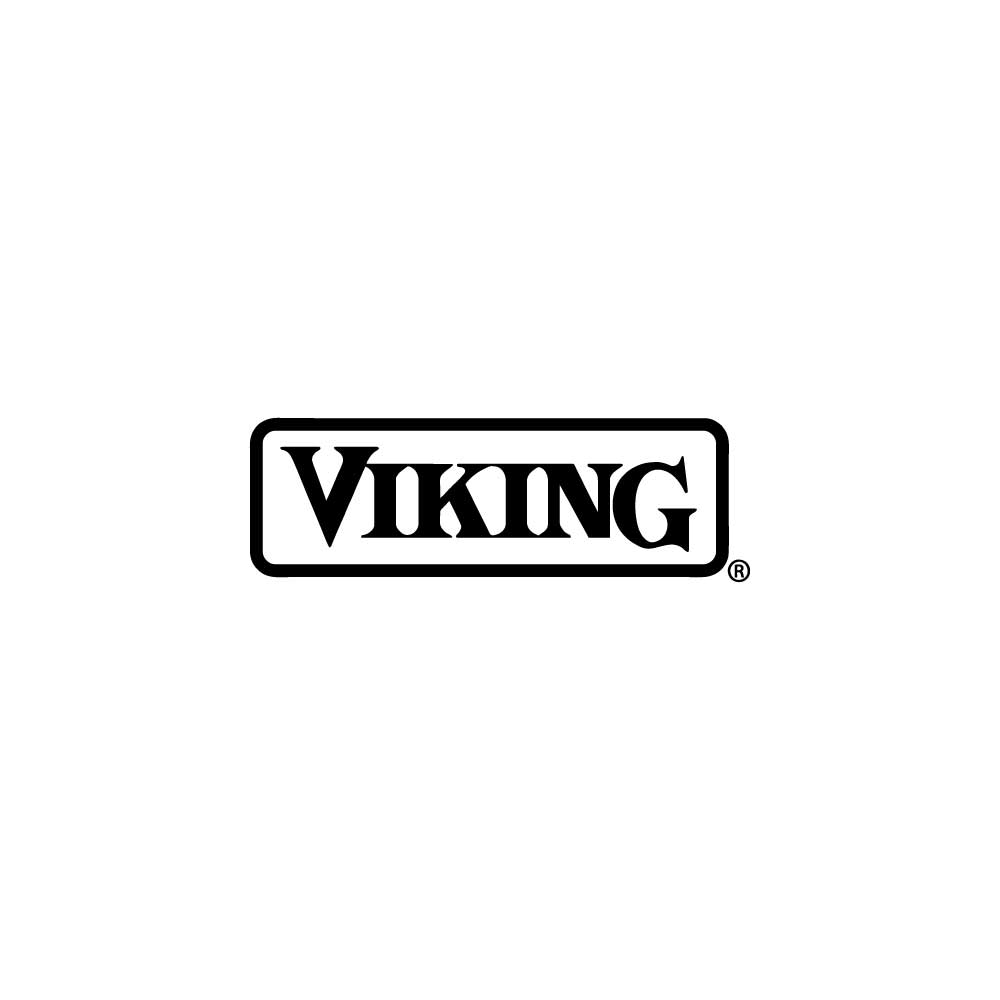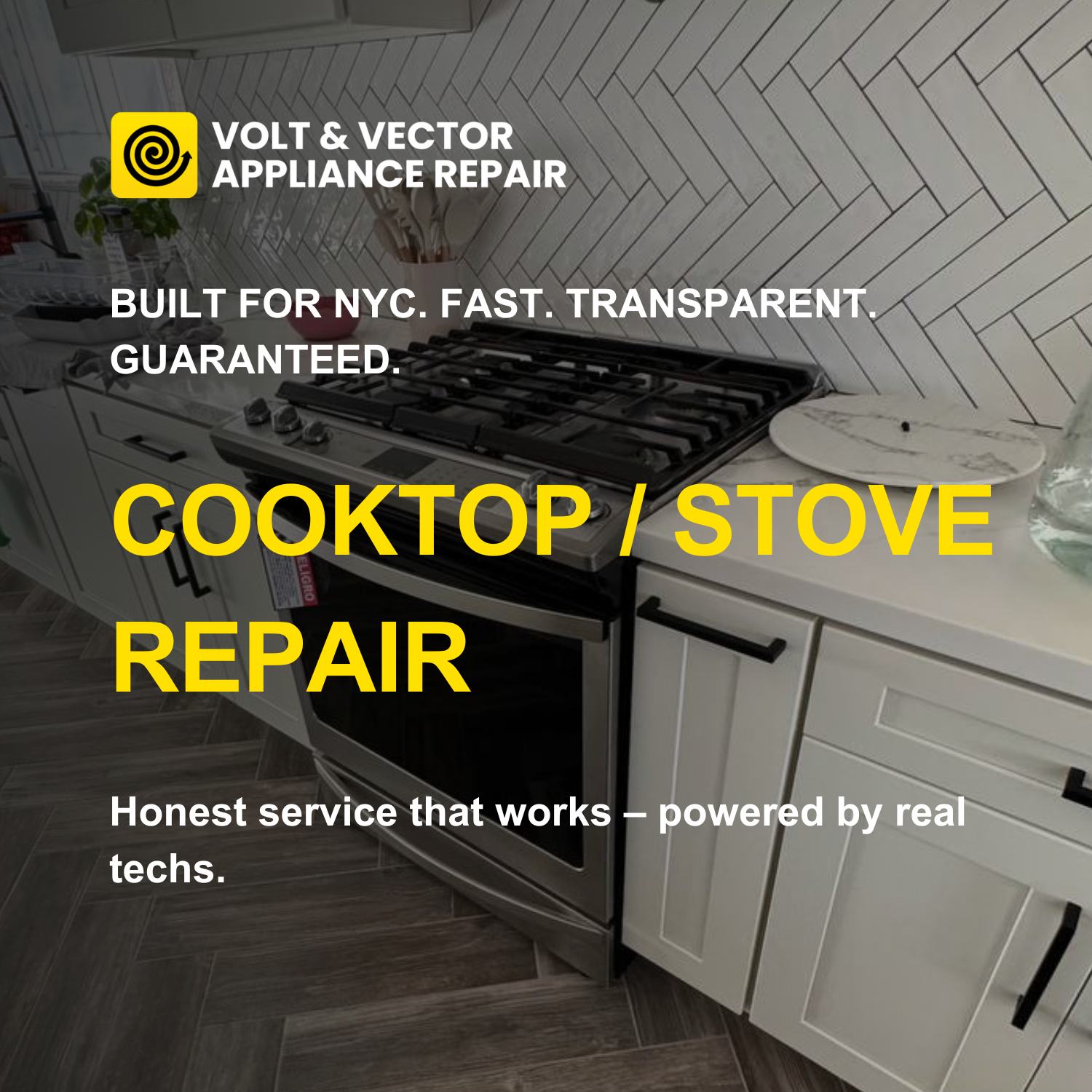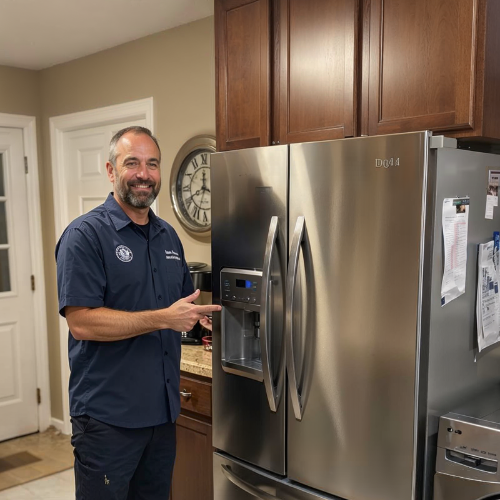Fisher & Paykel Freezer Repair
Volt & Vector Appliance Repair
23 Google reviews
Experience premium service for Fisher & Paykel Freezer challenges. Our advanced diagnostics and same-day service come with a $99 diagnostic fee (credited to repair) and a 180-day warranty.
Local techs
+1 (332) 333-1709
.avif)

Resolve Fisher & Paykel Freezer issues with our $99 diagnostic fee and same-day service.
Fisher & Paykel Freezers are faced with unique challenges in the densely packed environments of Brooklyn and Manhattan, where cascading system failures can arise from energy inefficiencies and spatial constraints, leading to significant lifestyle disruptions. Malfunctioning units often result in loss of valuable food items, unexpected temperature variances, and costly energy waste.
Our approach at Volt & Vector utilizes advanced diagnostic methodologies, including precise multimeter testing and control board signal tracing, to analyze sealed system pressures. This ensures that your freezer receives the true attention and urgency it requires while navigating the logistical complexities of service in diverse housing types.
We pride ourselves on delivering exceptional service, highlighted by our $99 diagnostic fee (credited to repair) and a robust 180-day warranty. Our same-day service availability ensures that you won’t have to endure prolonged inconvenience, and we guarantee the use of OEM parts for reliability and performance.
Understanding Fisher & Paykel Error Codes
Code E308: This code indicates that there is an issue with the freezer temperature sensor.
Possible Causes:
- The temperature sensor is faulty.
- Wiring issues affecting the sensor connection.
- The freezer is not cooling properly due to a blocked airflow.
User Actions:
- Check if the freezer is set to the correct temperature.
- Ensure that the vents inside the freezer are not blocked by food items.
- Unplug the freezer for a few minutes and then plug it back in to reset the system.
Code E373: This code suggests that there is a problem with the compressor operation.
Possible Causes:
- The compressor is malfunctioning.
- Power supply issues affecting compressor performance.
- Dirty condenser coils leading to overheating.
User Actions:
- Check to see if the freezer is making any unusual noises.
- Inspect the power cord for any visible damage.
- Clean the condenser coils if they are dusty or blocked.
Code E388: This code indicates a communication error between the control board and the freezer components.
Possible Causes:
- Loose or damaged wiring connections.
- Faulty control board.
- Interference from other appliances.
User Actions:
- Inspect the wiring connections for any visible damage or loose connections.
- Try unplugging the freezer for a minute to reset the electronics.
- Avoid placing other electronic devices near the freezer that might cause interference.
Technical FAQs & Diagnostic Insights
Q: What does the E308 error code indicate?
A: This code signifies an issue with the freezer temperature sensor. It is critical to verify the sensor's functionality and ensure wiring integrity to confirm accurate temperature regulation.
Q: What are common symptoms of leaking?
A: Leaks can result in moisture buildup and may lead to internal frost, affecting cooling performance. Identifying the source is essential to preventing further damage.
Q: Can you explain the E373 error code?
A: The E373 code indicates compressor malfunction, necessitating a thorough investigation of the compressor and potential power supply irregularities to restore functionality.
Q: How does excessive noise signal a problem?
A: Excessive noise often relates to compressor operation issues or vibration due to loose components. Addressing these at the component level can mitigate further operational failures.
Advanced Pre-Service Checks for Homeowners
Breaker load assessment for proper power distribution
Thermistor resistance verification for temperature accuracy
Condenser coils examination for dust accumulation
Door seal vacuum checks for integrity under pressure
Control lock and reset procedures for electronic systems
Warning: Sealed system work requires certified technicians due to risks of gas leaks and electrical faults. Addressing these issues poses safety hazards and should not be attempted by consumers.
Advanced Pro Maintenance Tips
To prevent **leaking** from the **inlet water valve**, routinely inspect the valve and its connections for any signs of wear or corrosion, particularly in high-rise buildings where **water pressure** can fluctuate significantly. Use a multimeter to **test resistance values** on the valve's solenoid - refer to OEM specifications for appropriate values, replacing the valve with part number 626259 if found faulty.
To reduce **noise/vibration** issues caused by the **compressor**, ensure that the unit is sitting firmly on its rubber isolation mounts. Check that these mounts are not deteriorating, as vibration transfer can be exacerbated in **space-constrained installations** typical in NYC; if necessary, replace the mounts with OEM part 626673 for optimal sound dampening.
Before accessing any internal components, always **disconnect the power supply** to avoid electrical shock hazards. When inspecting the **control board relay** for potential failure, examine solder joints for cold cracks and ensure connections are secure, following OEM troubleshooting procedures outlined in the service manual. Only proceed once power is confirmed off using a multimeter.
To prevent energy inefficiency and potential **power failures**, perform a thorough cleaning of the **condenser coils** using a soft brush, keeping in mind that **NYC’s air pollution** can cause buildup. Ensure that airflow is unobstructed and verify that ambient temperatures align with the recommended operating range, as specified in the OEM guidelines for optimal performance.
Expert Cost-Benefit Analysis: Repair or Replace?
Evaluating repairs on Fisher & Paykel Freezers requires detailed attention to component age and the typical failure patterns of parts such as compressors and control boards. In many instances, prolonging the life of a unit may be cost-efficient, with repairs often ranging around 50-70% of replacement costs, especially in NYC where service labor can drive up expenses.
However, replacement becomes prudent under these criteria:
- Significant energy efficiency upgrades over older models
- Scarcity of OEM parts due to model discontinuations
- Cumulative repair costs nearing 70% of the purchase price
- High-rise delivery logistics complicating installation for replacements
Advanced Pro Maintenance Tips
To prevent **leaking** from the **inlet water valve**, routinely inspect the valve and its connections for any signs of wear or corrosion, particularly in high-rise buildings where **water pressure** can fluctuate significantly. Use a multimeter to **test resistance values** on the valve's solenoid - refer to OEM specifications for appropriate values, replacing the valve with part number 626259 if found faulty.
To reduce **noise/vibration** issues caused by the **compressor**, ensure that the unit is sitting firmly on its rubber isolation mounts. Check that these mounts are not deteriorating, as vibration transfer can be exacerbated in **space-constrained installations** typical in NYC; if necessary, replace the mounts with OEM part 626673 for optimal sound dampening.
Before accessing any internal components, always **disconnect the power supply** to avoid electrical shock hazards. When inspecting the **control board relay** for potential failure, examine solder joints for cold cracks and ensure connections are secure, following OEM troubleshooting procedures outlined in the service manual. Only proceed once power is confirmed off using a multimeter.
To prevent energy inefficiency and potential **power failures**, perform a thorough cleaning of the **condenser coils** using a soft brush, keeping in mind that **NYC’s air pollution** can cause buildup. Ensure that airflow is unobstructed and verify that ambient temperatures align with the recommended operating range, as specified in the OEM guidelines for optimal performance.
About our company:
Volt & Vector — Professional Appliance Repair Service in New York City
Diagnostic Workflow
- Model & serial verification (rating-plate photo).
- Functional test — run service mode, retrieve stored error codes.
- Electrical measurement — voltage, amperage, resistance under load.
- Mechanical check — motors, valves, belts, pumps, airflow or coolant path.
- Safety validation — water, gas, or vent integrity.
- Estimate issued before repair authorization.
If the client proceeds, the diagnostic credit applies in full. Every visit is logged with readings and photos for warranty traceability.
Parts & Sourcing
Only factory-original OEM components from authorized distributors.
Each part is tracked by model, serial, and invoice ID.
We never use rebuilt electronics or aftermarket substitutes.
Refrigeration and sealed-system work performed by EPA 608-certified technicians.
Warranty & Compliance
- 180 days on both parts and labor.
- Documentation stored in secure cloud system for repeat-visit reference.
- COI and technician ID available for building management.
- All work complies with NYC Electrical & Plumbing Codes §27-740 et seq.
Safety Protocol
If there’s water leakage, cut the supply immediately.
If smoke, odor, or sparks appear — shut the breaker and disconnect.
Technicians arrive with insulated tools, PPE, and isolation testers rated to 1000 V CAT III.
Pre-Visit Checklist for Clients
- Confirm building access / doorman / elevator window.
- Provide brand + model + symptom (photo helps).
- Clear workspace around appliance (2–3 ft).
- If possible, note any error code or behavior pattern.
These steps reduce diagnostic time and ensure correct parts are dispatched.
Service Coverage
Brooklyn: Downtown, Brooklyn Heights, Park Slope, Williamsburg, Greenpoint, Bed-Stuy, Carroll Gardens, Prospect Heights, Flatbush.
Manhattan: FiDi, Battery Park, Tribeca, SoHo, Chelsea, Midtown, UES, UWS, Gramercy, Village.
Text alerts are sent ≈ 30 minutes before arrival.
Data & Documentation
Volt & Vector maintains a private service database linking symptoms, part numbers, and test results across thousands of NYC appliances.
Why Clients Choose Volt & Vector
- Local operation: no subcontract chains.
- Direct communication: text / email / call — no call-center delays.
- Technical credibility: trained on Bosch Benchmark, Miele W1/T1, Sub-Zero sealed-system platforms.
- COI & property compliance: trusted by NYC building management.
- Fast logistics: inventory and supplier network inside the five boroughs.
Commitment to Repair Ethics
Every successful repair extends appliance life, lowers energy waste, and avoids landfill scrap.
All replaced components are recycled through certified NYC facilities.
“Repair First” is our environmental and professional baseline.
Schedule Service
- Text or call (332) 333-1709.
- Send appliance info + photos.
- Receive ETA and firm estimate.
- Technician arrives within your chosen window, completes service, provides digital invoice and warranty.
Volt & Vector — Built for NYC by Real Techs
Professional diagnostics, OEM components, documented results.
Transparent pricing. Zero guessing. Guaranteed repair.
Primary Services
See the full catalog of our services—organized by brand and by appliance—right here.



































.svg.png)








.png)
.png)




.png)
.png)
